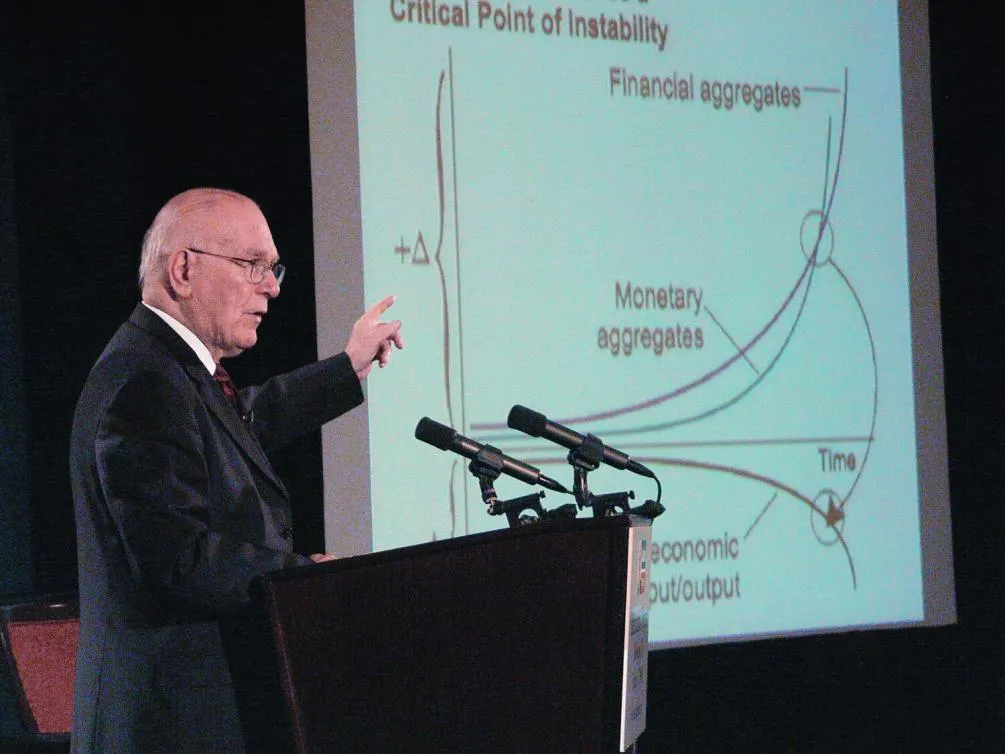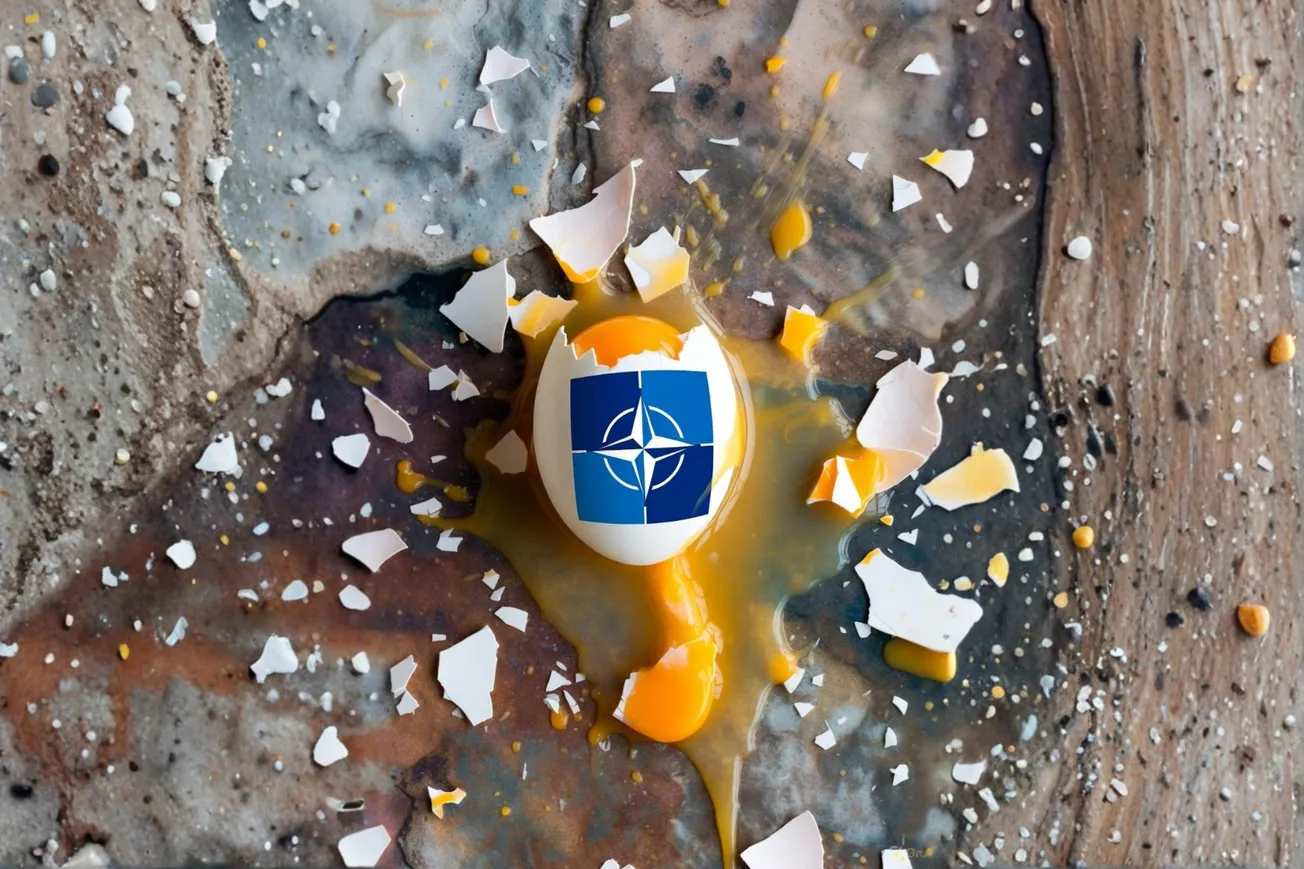By the time you read this, on Oct. 7, Israel may well have conducted an attack on the nation of Iran, “in retaliation” for Iran’s attack last week on Israeli military sites. What weapons will they use, and for what purpose? Whether today, or later, war is the intention.
As ominous, however, as the situation in Southwest Asia is, consider Ukraine, where some parliamentary officials are urging that Ukraine make an assault on Belarus. Russia’s Dmitry Medvedev has already responded. “Well then, Alexander Grigorievich [Lukashenko, Belarusian President] will have full grounds to ask Russia to use the tactical nuclear weapons deployed in Belarus.”
This day, October 6, the world is very, very different than the way it appears. An example: To understand the actual, undiscussed dynamic at the root of the three-front war in Ukraine, Southwest Asia, and the Pacific, a war that “Global NATO” is fighting against the world, note the brief public statement Vladimir Putin made, to open a meeting of the Russian Security Council on Oct. 4: “Today, I suggest that we discuss measures for establishing an international payment system. We are all aware that this is a serious task in the current environment and one of the biggest challenges we face. Overall, this work is progressing steadily, but it is important to address any issues promptly and to plan the steps necessary to overcome the difficulties that are being created outside our borders for us.”
An international payment system, as the primary topic at a Russian Security Council meeting? Not Ukraine? Not the Russian defense budget? Not the American elections? Not Southwest Asia? Not any of the things, in other words, that people in the trans-Atlantic world have been led to believe that Putin, “the war criminal” would be speaking about? Perhaps the trans-Atlantic world and its intelligence agencies have lost a grip on reality. Is this because of the geopolitical opaqueness of their post-Cold-War-era analytical axioms? In fact, Putin’s Russia Security Council is discussing what they know to be the actual casus belli for the trans-Atlantic world: the inevitable public, “official” collapse of their already-de facto-collapsed $2 quadrillion debt structure.
For perplexed policymakers, their analytical dilemma would seem to fall into the domain of what Lyndon LaRouche, founder in 1974 of Executive Intelligence Review, once termed “the incommensurable.” Something that you either did not previously know to exist, or should have known, but had not considered might exist, upends, by its “impossible” existence, your entire framework for understanding anything at all. What, for example, if, looking at today’s world, one concluded that there are two completely different ideas of physical economy, and therefore of durable human survival, that are now before the world—and that they are not “capitalism vs. communism,” “the Chinese Communist Party vs. the world,” “the autocracies vs. the democracies” or any other silly, binary, pairwise sports play?
One world-intention, whatever its national governmental form, seeks to prop up an unpayable debt, and to extract various resources from militarily relatively weaker countries by depopulating them, under the guise of “the rule of law.” The other world-intention, whatever its national governmental form, is committed to a policy of win-win economic cooperation and development among sovereign, independent nation-states, each of which is at different levels and rates of economic and political development. Both Ukraine and Israel are aligned with the first stance. The BRICS nations, joined by scores of nations of the Global South, are aligned with the second. The first system, the oligarchical or “British” system, is run by the City of London, and its Wall Street partner. The second, best represented right now in the BRICS (Brazil, Russia, India, China, South Africa) combination, actually was once known as “the American System of economy,” but can’t be called that now, since the present-day United States policy establishment has not only betrayed and rejected it, but campaigns against it, by campaigning against the BRICS (as in the case of Argentina, and in another sense Iran.) This is the American System of Alexander Hamilton and Friedrich List, not the “Anglo-American system” of Mike Bloomberg; the system of Lincoln’s Trans-Continental Railway, not of Biden’s “Build Back Better.”
The realization of the anti-colonial principles of Hamilton’s system of physical economy was attained and surpassed in the economic work of the American statesman and economist Lyndon LaRouche. In 1976, when LaRouche ran as the Presidential candidate of the United States Labor Party, he campaigned for the Presidency on the level the world should expect and require from an American Presidential candidate. Since his exit from the Presidential stage in 2004, twenty years ago, the power of the Presidency, as it relates to the elections, and to the General Welfare of the American citizenry, has woefully declined. To revive the true American Presidential system, equipped with a world economic alternative, we must refer to the American System as the Physical Economy of Lyndon LaRouche,
LaRouche used his advanced conceptions of physical economy, in particular his ideas of “potential relative population density” and “increased energy flux density” in the workplace—for example, laser machine tools that would revolutionize production on the assembly line—to propose economic policies for world reconstruction and development. This was the America that the world longed to see, but was counter to the plans of Henry Kissinger, Zbigniew Brzezinski, and George Herbert Walker Bush, who hated LaRouche.
For that 1970s “American System” re-discovery and revival, as expressed in the work of LaRouche; of that of his associate, W. Allen Salisbury, author of the book The Civil War and the American System; and in LaRouche’s proposed laser applications of energy-dense processes to both re-tool the American workplace, and to solve the problem of a national security global defense against nuclear weapons, LaRouche was singled out for “special treatment.” In 2004, LaRouche revealed that:
On October 6, 1986, a virtual army of more than four hundred armed personnel descended upon the town of Leesburg, Virginia, for a raid on the offices of EIR and its associates, and also deployed for another, darker mission. The premises at which I was residing at that time were surrounded by an armed force, while aircraft, armored vehicles, and other personnel waited for the order to move in shooting. Fortunately, the killing did not happen, because someone with higher authority than the Justice Department Criminal Division head William Weld, ordered the attack on me called off. The forces readied to move in on me, my wife, and a number of my associates, were pulled back in the morning.
That attempted assassination of LaRouche, 38 years ago, is the proper standpoint from which to actually make sense of today’s criminal policy of governmental assassination. Julian Assange’s statement in Strasbourg, France last week, recounts that “It is now a matter of public record, that under (former CIA Director Mike) Pompeo’s explicit direction, the CIA drew up plans to kidnap and to assassinate me within the Ecuadorian embassy in London and authorize going after my European colleagues subjecting us to theft, hacking attacks, and the planting of false information.” This is the same Pompeo (then Secretary of State) who said to a group of students at Texas A&M University, April 15, 2019, “What’s the cadet motto at West Point? ‘You will not lie, cheat, or steal, or tolerate those who do’? I was the CIA Director. We lied, we cheated, we stole….”
So, assassination, though it was supposedly outlawed on the part of the United States by various laws of the 1970s and ‘80s, is increasingly the employed, even preferred method of “governance” upon which the Anglosphere wants to rely—government by murder. Remember the July 30, 2024 title of a Foreign Policy article, “Would the U.S. Consider Assassinating Putin?” Remember the two failed assassination attempts within two months against former President Donald Trump, who returned to the scene of the averted crime in a rally attended by tens of thousands in Butler, Pennsylvania on Saturday, Oct. 5?
A “United States of Assassinations” usurped the American Presidency on November 22, 1963, with the killing, and the coverup of the killing, of the President of the United States, John. F. Kennedy. A series of assassinations followed, including Malcolm X, Martin Luther King, and Presidential candidate Robert Kennedy. Just after that, the FBI and other agencies began assassinating American citizens, as in their Dec. 4, 1969, murder of the 21-year-old Black Panther leader Fred Hampton in Chicago. And while the Sen. Frank Church’s committee’s investigations of the CIA led to the issuance of a series of Executive Orders—EO 11905 in the year 1976; EO 12036 in 1978; and EO12333 in 1983—specifying that “anyone employed by the U.S.government” was prohibited from participating in, or aiding in other ways, assassinations—the assassination of political opponents goes on, as it almost went on in the case of Lyndon and Helga Zepp-LaRouche in 1986, and almost happened to Donald Trump in Butler, Pennsylvania in July, and a little later the following Sept. 15 in West Palm Beach, Florida. Netanyahu’s assassinations have been supported, and therefore encouraged, by both the Republican and Democratic candidates. That those assassinations of Hamas leaders in Gaza carry “collateral damage” of thousands of women and children, is as Dr. Mark Perlmutter observed, a lie. The Hamas membership is collateral damage in the systematic destruction of hospitals, schools and mosques in Gaza, now Lebanon, and soon Iran.
The discussion in the Russian Security Council, however, underscores why the Ten Principles for a New International Security and Development Architecture of Helga Zepp-LaRouche must become the minimal moral high ground from which the dismantling of the “Beast-Man’s” International Assassination Bureau, (including its murderous economic Malthusian population reduction wars), could be achieved. World economic development is a reality. In the battlefield of Southwest Asia, the LaRouche Oasis Plan, as impractical as it may seem at the moment, must remain the higher ground from which we fight, and cause the world to follow. Against war, we must insist that the only solution is peace through economic development, not assassination.





